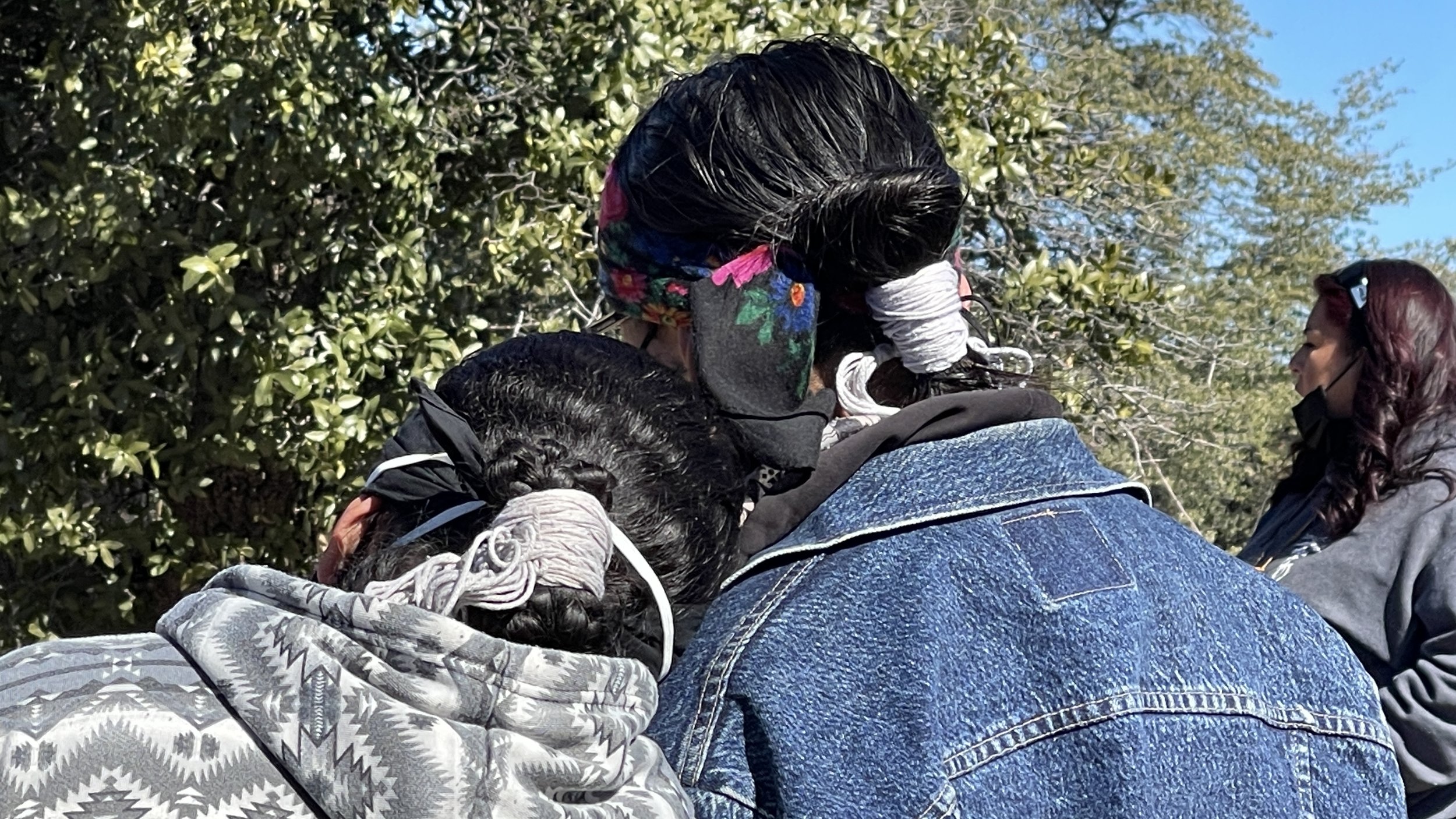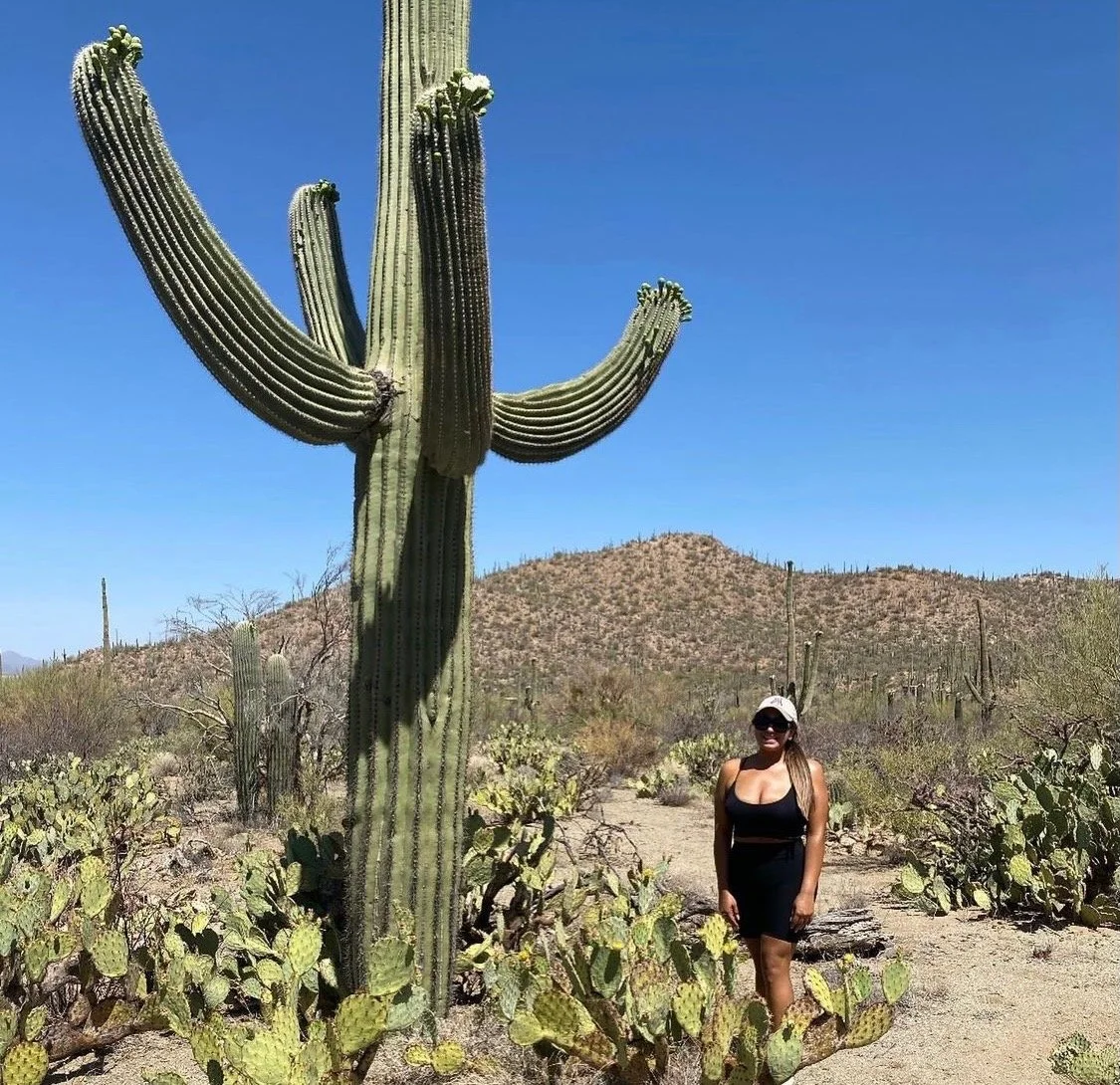Photo by Daniela Zavala.
Read MorePhoto by Andrew Black, NWF
Read MorePhotos provided by Ylenia Aguilar.
Read MorePhoto by Daniela Zavala.
Read MorePhotos by Dana Orozco.
Read MoreBy: Coconino County Supervisor, District 2, Jeronimo Vasquez
For as long as I can remember, the outdoors has been an interwoven element of my life. For my family, it was something that we were always mindful of and it informed so many of the values that I continue to carry in my life today. I also come from a family of educators and they instilled in me the importance of education, community, and youth programming. Looking back now, my career aligns with so much of the teachings they shared with me.
Read MoreBy Arizona State Representative Alma Hernandez
I was born and raised on the South Side of Tucson. My father grew up on a farm in Van Nuys, California and my mother emigrated from Nogales, Mexico. I’m the youngest of three, and proud to carry the strength and resiliency of my ancestry and my community. The district that I’m from and also represent is predominantly Hispanic and low-income. Our community is beautiful, with vendor-lined streets and a strong sentiment of care.
Read MoreIn November 2021, President Biden signed the Infrastructure Investment and Jobs Act (IIJA) into law. The IIJA included transformative financial investments in drinking water infrastructure that will eliminate lead pipes and service lines across the county, and make necessary improvements for Arizonans.
In addition to funding for the removal of lead pipes, several other key IIJA provisions support clean water infrastructure through grants to municipalities including $1.4 billion for sewer overflow and stormwater reuse and $125 million for alternative water source projects. The impact of this funding will be resiliency against drought through projects that increase groundwater recharge, stormwater capture and reuse, and water recycling and ensures that municipalities have the needed infrastructure to properly manage polluted stormwater.
Read MoreHECHO was created to ensure that Hispanic and Latinx communities have a voice in the public-land management process. Since our inception, we’ve worked hard to make sure that Hispanic and Latinx leaders and communities have a seat at the decision-making table when it comes to energy development, the management of federal lands, conservation funding, and the permanent protection of important landscapes across the West.
Read MoreI have always carried a deep connection to the outdoors. I was born in a rural town in Michoacán, Mexico which is where my indigenous identity is rooted; and I grew up in Fort Bragg, California, a small town nestled between the vastness of the Pacific Ocean and the great Redwood Forest. It wasn’t uncommon for friends and I to walk to the quiet beaches after school or on a weekend morning. In middle school, I joined a climbing and hiking club which would often explore the adjacent streams and rolling hills of Jackson State Forest. In high school, I ran cross country. Through that sport I was lucky enough to spend afternoons running on coastal trails, and at times traveling inland to run through vineyards, and around serene lakes. I very much enjoyed my time connecting to nature in the area of California that I grew up in. Even today, I find that when life gets a little too hectic, nothing grounds me quite like nature.
Read MoreI grew up in the very busy metropolitan city of Bogota, Colombia, and the majority of my time was spent going to the mall or school. Once in a while, my family and I would take trips to the countryside to see beautiful scenery and enjoy the wonderful biodiversity, but as a kid, I was more interested in my Nintendo than engaging with the nature around me.
Read MoreCongress’ proposed $3.5 trillion budget reconciliation bill is a bold investment in America. It follows the already historic $1 trillion bipartisan infrastructure plan, known as the INVEST in America Act, and plans for wider-ranging investments. Chief among these are investments to address climate change that build upon the infrastructure developments planned under the INVEST in America Act. In particular, the investments under the budget reconciliation bill will provide the country with much-needed help for critical restoration and resilience projects aimed at reducing drought and forest fires, and would support meaningful progress on environmental justice while creating millions of jobs.
Read MoreI grew up in Trinidad, Colorado – an old western town settled as a stop on the Santa Fe Trail. As a result, it has been a mining community and a cattle town. I’ve always appreciated its history, the grit it must have taken to survive and thrive. Because of the way Trinidad was settled, and the industries that began here, it was a microcosm of different cultures.
In the late sixties, my father arrived from northern New Mexico after receiving a full-ride scholarship to the University of Denver School of Law. He was the first in his family to pursue and graduate with a law degree. Soon after graduating, my parents moved to Trinidad. My father was deeply respected and was even elected to two terms as District Attorney. He also served as County Attorney for Las Animas County before he and my mother opened several businesses in Trinidad. They embraced life here and were beloved by their community. Their appreciation of Trinidad was something they made sure to pass on to my siblings and me.
Read MoreThis piece originally appeared as a blog post on July 21, 2021 via The National Wildlife Federation during Latino Conservation Week.
By Bianca McGrath-Martinez | 07/21/2021
Saturday, July 17th marked the start of the 8th annual celebration of Latino Conservation Week, which is an initiative of the Hispanic Access Foundation created to support Latinx communities getting into the outdoors and participating in activities that protect our natural resources.
Read MoreI grew up in Corpus Christi, Texas, which is right on the Texas Gulf Coast. I came from a family that did not have a lot of money, so we did a lot of outdoor things like car camping, fishing, and hiking. The hunting we did was for our own livelihood. My father made it a priority to instill an appreciation for all the things the land offers us, clean air, clean water, and wildlife. These values have informed the conservation practices that have carried on into my life, that I have passed to my own children, and that I look forward to sharing with my grandchildren.
Read More















